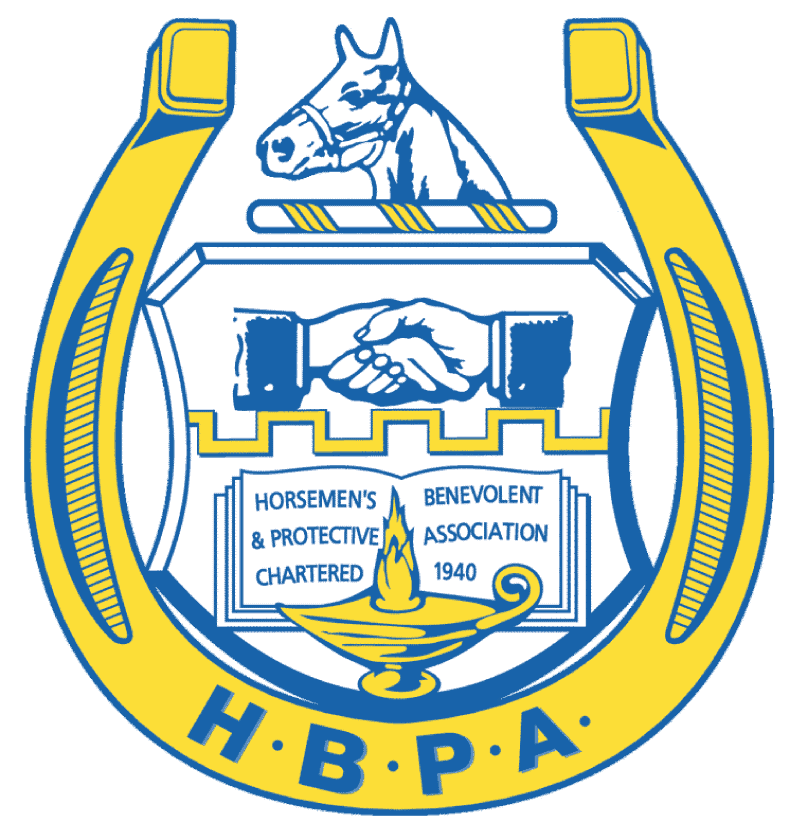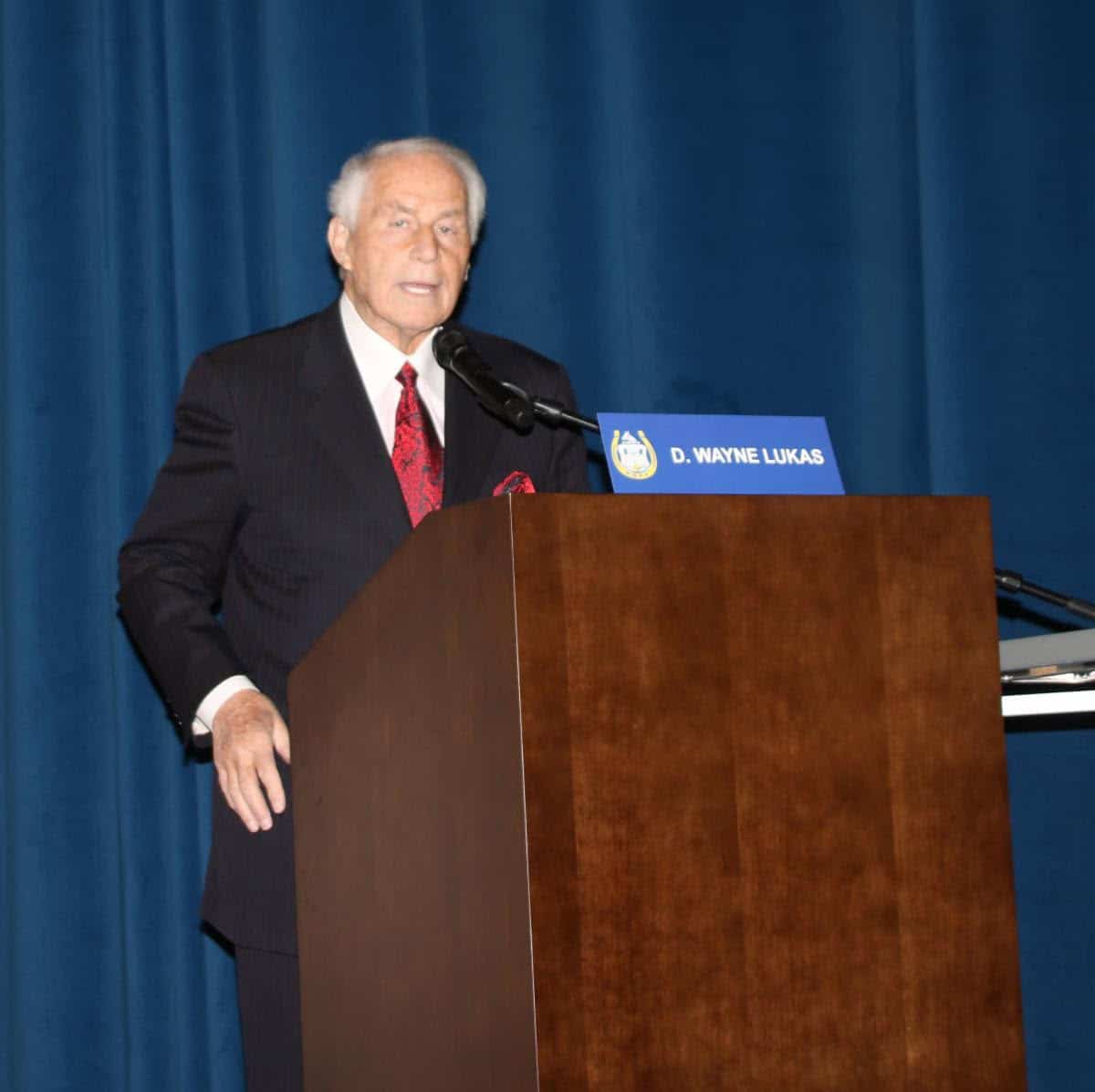Fact or Fiction? Dissecting the 60 Minutes piece on “one of the biggest horse doping investigations in U.S. history”
 By Sherri Boland; Kimberly Brewer, DVM; and Clara Fenger, DVM, PHD, DACVIM
By Sherri Boland; Kimberly Brewer, DVM; and Clara Fenger, DVM, PHD, DACVIM
From the Winter 2023 Issue of The Horsemen’s Journal
On November 12, 2023, 8 million viewers tuned in to watch 60 Minutes and a segment titled “Horse Racing Reform?” hosted by correspondent Cecilia Vega. The segment began with an overview of the Justice Department winding down its “Sport of Kings” investigation on “one of the biggest horse doping investigations in U.S. history,” ultimately “convicting 29 veterinarians, horse trainers and drug distributors,” most notably Jorge Navarro and Jason Servis.
The beginning of the segment includes a gross misrepresentation of the facts, as 29 people were not convicted. Of the 29 people indicted, 25 were convicted. Of those convicted, only seven were Thoroughbred racing, aka the Sport of Kings, participants, which represents only about 0.03 percent of Thoroughbred horsemen nationwide. In comparison, 0.7 percent of the American populace is incarcerated. This hardly reflects rampant corruption as portrayed by Vega. The minimal corruption associated with Thoroughbred racing reflects the effective gatekeeper role of the state racing commissions, which place restrictions on licensure.
Another seven of those convicted were drug manufacturers or distributors. The remaining convictions were from Standardbred racing, which is not included in the definition of Sport of Kings. The case revolved around the misbranding and adulteration of drug products, which centered mostly on drug products manufactured according to an ISO 9001 Quality Standard instead of the more appropriate FDA GMP standard. The drugs also were marketed with wild unsubstantiated claims to enhance performance.
Even the most infamous of those products, SGF-1000, was repeatedly tested and determined to contain no special growth factors at all. The investigation was, without a doubt, “one of the biggest horse doping investigations in U.S. history,” although whether actual doping was ever identified remains an outstanding question. Nonetheless, penalizing those seven Thoroughbred racing people involved in the scandal is universally embraced by the vast majority of hard-working and honest Thoroughbred horsemen.
If the goal of Vega and 60 Minutes was to deal a blow to horse racing, regardless of the facts, they could not have done a better job. Early in the segment, they sensationalized several high-profile breakdowns. They mentioned the 12 horses that perished at Churchill Downs in the runup to the 2023 Kentucky Derby, and while the new Horseracing Integrity and Safety Authority (HISA) medication rules (the Anti-Doping and Medication Control [ADMC] regulations) were technically not yet adopted, they were actually already in place, because the Kentucky Horse Racing Commission had already put them into action.
When asked about the breakdowns, HISA CEO Lisa Lazurus responded, “We’re here now.”
Vega referred to HISA as set up by Congress to “clean up the sport, which for years has grappled with drugs and cheating.” Vega failed to do even the simplest of investigative journalism.
A simple phone call to Ed Martin of the Association of Racing Commissioners International could have set her straight. Horse racing has an annual positive test rate in the range of 0.5 to 0.7 percent, lower than the rate found in the United States Anti-Doping Agency (USADA). In contrast to USADA, which typically finds performance-enhancing substance violations as a result of its testing, the majority of positive tests in horse racing have been overages of therapeutic medications or the presence of trace quantities of drugs that spill over as contamination from humans. This hardly reflects an industry “grappling with drugs and cheating.”
When Vega mentioned the deaths at Churchill and Pimlico Race Course and asked Lazarus if “drugs had anything to do with these deaths,” Lazarus had the opportunity to tell Vega that no drugs were identified in any of the injured horses. Instead, she said, “Now that we have control over all of it, I’m confident that we can do our job.”
The public was led down a road of assuming that the use of illegal performance-enhancing and banned drugs was at the heart of the breakdowns. Lazarus conveniently failed to mention that not one single horse in the footage of very public breakdowns occurring at signature meets had tested positive for any substance.
When questioned about the breakdowns that occurred at Churchill’s spring meeting and Saratoga Race Course’s summer meet, Lazarus willfully stated that they were still under investigation. However, a HISA-appointed commission had already completed its investigation of the breakdowns. Despite extensive investigation and analysis, HISA did not identify any singular explanation for the fatalities at Churchill Downs and continually reported no findings due to track surface or misuse of drugs. Lazarus finally had the perfect window of opportunity to defend racing, but she remained silent.
Vega went on to question whether the newly formed HISA could “get ahead of corrupt veterinarians and horse trainers.” To get an understanding of doping in horse racing, Vega interviewed Stuart Janney III, whose resumé boasts ownership of champion racehorses and chairmanship of The Jockey Club, the Thoroughbred breed registry. While Janney has influence in horse racing, his qualifications hardly make him the most knowledgeable person on the subject of doping.
Vega and 60 Minutes failed to make a simple phone call to Dr. Steven Barker or Dr. George Maylin, lab directors who have actually dedicated their lives to uncovering doping in horse racing. Janney went on to say that doping in racehorses is a huge problem and is getting worse and that state racing commissions have failed at regulating the sport, despite the identification of substances such as etorphine, dermorphin and AH-7921 and their successful prosecution.
During her interview with Janney, Vega stated, “When you talk about something that is as institutionalized as corruption has been, I don’t know how you clean that up.” This statement elicited a gut reaction from most participants in horse racing, because it paints us all with a very sinister brush.
Janney fails to defend the more than 99 percent of horsemen who are simply trying to make an honest living working with the most elite of athletes, Thoroughbred racehorses. Instead, he says you have to send them out of the sport and send some of them to jail. Before the passage of HISA and the hostile takeover of Thoroughbred horse racing by a private corporation, people did go to jail, and they were eliminated from the sport.
In the late 1980s the development of ELISA testing for illegal drugs, spearheaded by Dr. Tom Tobin of the University of Kentucky’s Maxwell H. Gluck Equine Research Center, revolutionized drug testing and exposed the use of any number of substances. This advance in testing was funded by a joint venture between the Kentucky Horsemen’s Benevolent and Protective Association and the Kentucky Horse Racing Commission, reflecting the common goal of horsemen and regulators alike of ridding the sport of drugs. For example, in 1989, trainer Carl David Butler was ruled off for five years in Oklahoma for etorphine, also known as elephant juice, one of the first ELISA identifications. More recently, in 2015, Roy Sedlacek was suspended for 10 years for using AH-7921, an experimental opioid. In 2018, a Louisiana veterinarian was sentenced to 15 months in jail for selling dermorphin, another opioid-like drug. Beyond these finite suspension periods, the state racing commissions have the discretion to never relicense these horsemen again. These commission victories are few and far between because actual instances of doping in horse racing, contrary to the opinions of Vega, Lazarus and Janney, are few and far between. Nonetheless, when novel doping agents have filtered into racing, they have been identified, the perpetrators apprehended and sanctions put in place by the state authorities that oversaw racing.
Vega also characterized the 2020 indictments as sweeping and reaching the highest levels of the sport. These are grandiose claims for indictments that included exactly four Thoroughbred horse trainers and three Thoroughbred veterinarians.
The investigation by 5 Stones Intelligence is described, with both Jeff Gural, a New York real estate businessman and owner of the Meadowlands Racetrack, and Janney quoted as saying they provided a targeted list of trainers they suspected to be “corrupting the sport.”
There can be no doubt that individuals were targeted based on the personal opinions of a couple of influential people. This was all so that a ring of co-conspirators using SGF-1000, a substance that was repeatedly tested and found to contain nothing, could be brought down. Nothing rising to the level of etorphine, dermorphin or AH-7921 was identified in “one of the biggest horse doping investigations in U.S. history.”
In the concluding segment, Vega stated that since HISA has taken over the industry’s anti-doping program, 33 trainers have been suspended for banned substances. This statement is made as if the HISA program is starting to make a dent in the “institutionalized corruption” of horse racing. In fact, the basis for not one suspension rises to the level of dermorphin, etorphine or AH-7921.
Of the 33 provisional suspensions, six were already lifted and the allegations completely dismissed at the time of the 60 Minutes segment. There is no mention in the Vega piece of the reputations tarnished and income lost as a result of erroneously applied suspensions. Two additional cases—both altrenogest (Regumate) positives—have had their provisional suspensions lifted pending final adjudication of their cases. Notably, new regulations currently proposed by HISA change the status of altrenogest in male horses from banned to controlled, substantially decreasing the penalty.
Five of the 33 suspensions were for the possession of thyroxine (Thyro-L). Before May 22, 2023, thyroxine was not only legal but commonly prescribed. Published research has supported its use in horses for non-sweaters, tying up, anemia and equine metabolic syndrome. Many veterinarians prescribed its use for failure to thrive cases in which the thyroxine level in the blood is low. In human medicine, thyroxine is the fourth most commonly prescribed medication, and it is also a common canine therapeutic. The basis for this important therapeutic’s inclusion on the HISA banned list remains elusive but appears to be based on the nonscientific assumption that thyroxine supplementation is associated with sudden cardiac death. Nonetheless, despite many presentations by HISA before the implementation of the medication rules on May 22, 2023, at least three horse trainers failed to dispose of legally prescribed Thyro-L before the rules went into effect. Two of the Thyro-L possession violations were for veterinarians, who would legitimately have possession for use in non-covered horses, such as track ponies and riding horses off-track.
Five more suspensions were for metformin, the most commonly prescribed medication for type 2 diabetes, a medication excreted in the urine that breaks down slowly in the environment. Metformin is so ubiquitous in the environment that it can be found in drinking water whenever it is looked for, including at the racetrack where two of the violations were found. Metformin use is so common in humans that many studies have been conducted to determine if it has an effect on athletic performance, and the overall conclusion of those studies is that the only measurable effect is increased perception of exertion. This effect would detract from performance rather than enhance it. Of these positives, two suspensions were already withdrawn at the time of the 60 Minutes segment, a fact conveniently overlooked by or unknown to Vega.
Another five suspensions were for trace levels of methamphetamine, well below any possibility of an effect. By way of comparison, in human drug testing, a level below 500 nanograms per milliliter in urine would be considered of no consequence, and the athlete would not even be informed that it was detected. The U.S. Department of Health and Human Services, which sets these cutoffs, clearly understands that trace methamphetamine exposure is common and inconsequential. In the horses of the five trainers suspended for detection of methamphetamine, the levels were far below the level considered to be irrelevant in humans.
Two suspensions were for isoxsuprine, a vasodilator commonly used with non-racing horses for treatment of foot soreness. A prolonged withdrawal time and a high risk of environmental transfer have limited its use in racehorses for at least 20 years. However, its use in non-racing horses like track ponies continues to pose a risk of environmental transfer. There is no mechanism of performance enhancement associated with isoxsuprine. Both trainer suspensions were associated with the treatment of the same track pony with isoxsuprine. The trainer who owned the track pony took the penalty without a hearing, and the second trainer fought the allegation and won.
One of the suspensions was for cobalt, a naturally occurring mineral that is both a required trace mineral and present in every bag of feed and bale of hay that a horse consumes at a level only slightly above the HISA threshold. The HISA regulatory scheme calls for no violation below a blood level of 25 parts per million (ppm) but a 24-month suspension and $25,000 fine above the 25 ppm. This severe penalty exists despite published research indicating that horses can have a blood concentration of up to 70 parts per billion naturally, and this level in the blood cannot possibly have any impact on athletic performance. In addition, under the previous regulatory scheme, an intermediate threshold between 25 ppm and 50 ppm was in place wherein the horse was placed on the vet’s list until its cobalt level came down. This scheme protected the integrity of racing by using a level well below any possibility of an impact on athletic performance and permitting a horseman to investigate their feed and hay to determine a possible source.
Two suspensions were for the opioid tapentadol. Both positive blood samples were collected after the horses had been euthanized using fatal
overdoses of pentobarbital. In neither case did HISA test the bottle of euthanasia solution, but the accused horsemen had a bottle tested and it contained tapentadol, likely a manufacturing impurity of the pentobarbital. The cases were dismissed, but not until after the trainers were suspended for 2 1/2 months, and all their horses had been transferred to other trainers.
The remaining suspensions were for clenbuterol, a Food and Drug Administration-approved bronchodilator; a naturally occurring substance, diisopropylamine, also known as vitamin B15; and two common environmental contaminants, methylphenidate (Ritalin) and venlafaxine (Effexor). Estimated levels of these substances were not provided by HISA, but based on experience with the levels from previous cases, the levels are likely to be very low.
So, of 33 suspensions referenced by Vega in the 60 Minutes segment, a small handful might represent attempts to dope but are more likely associated with inadvertent environmental exposure. The majority of these suspensions are due to inadvertent transfer from the environment beyond the control of the horsemen. Extended suspensions and excessive fines will not clean up this problem because trainers simply cannot control inadvertent environmental transfer.
Vega’s implication that HISA is just starting to clean up horse racing and Lazarus’s statement that “it is going to take a long, long time to clean it up” are a little misleading. A simple phone call to Eric Hamelback, CEO of the National HBPA, would have cleared all this up for Vega.
There is no way to know what drove the 60 Minutes segment, but Vega clearly had no intention of providing a balanced story. In interviews that occurred after the segment’s airing, even Janney and Lazarus have suggested that they were taken out of context.
Nonetheless, Janney and Lazarus must take ownership of the poorly rolled out HISA medication regulations and the perception of our industry. The mere fact that 33 suspensions for violations that fail to rise to the level of intentional doping have occurred since the medication regulations have been in place reflects poorly thought-out regulations.
Even HISA has acknowledged its ill-conceived penalty structure by adjusting the classifications and penalties after lives and reputations have been destroyed. Most of the problems could have been averted had the organization simply read the HBPA/North American Association of Racetrack Veterinarians submission, first to HISA and then to the Federal Trade Commission, in which the deficiencies in the regulations were detailed.
Janney and Lazarus allowed Vega’s characterization of the Thoroughbred industry as “institutionally corrupted” to go unchallenged, which is perhaps the worst part of their contributions to the segment. Our unelected leaders need to wake up and realize that we need each other for there to be any path forward. Imposing their will unilaterally on the industry will only destroy it.





